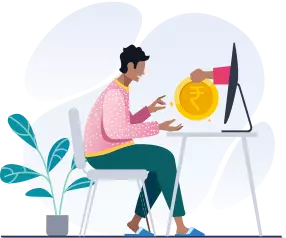Personal loans are a popular form of credit due to quick disbursement with minimal documentation. Despite this ease of access, many personal loan applications get rejected due to a lower credit score, EMI/NMI affordability, multiple personal loan applications, etc. Being aware of the reasons behind your rejection of your personal loan can help you take the right steps to strengthen your application and improve your chances of approval.
1. Lower Credit Score
Your application may be rejected due to a lower credit score which indicates a poor repayment history and high risk of default. This increases the credit risk for the lenders and therefore, your loan application may be rejected. Some banks or NBFCs may approve your personal loan application, but at higher personal loan interest rates.
2. Your EMI exceeds 50-55% of your NMI
The EMI to Net Monthly Income (NMI) ratio represents the proportion of your monthly income used for loan repayments. This ratio indicates your repayment capacity and lenders prefer to approve applications whose EMIs are in the range of 50%–55% of their NMI. Your existing and proposed EMIs are considered. If your total EMI exceeds the mentioned limit, your loan application may be rejected.
3. Low Income
Most lenders usually require a minimum monthly income of Rs 15,000 for salaried applicants and Rs 3 lakh p.a. for self-employed applicants. Some lenders may set a higher income eligibility criterion for higher loan amounts, say Rs 5 lakh personal loan. For instance, HDFC Bank requires a minimum Rs 25,000 salary for personal loan applications. Now, if your net monthly income is below the required income, lenders may not approve your loan.
4. Multiple Applications in a Short Duration
For each loan application, lenders fetch your credit report (known as a hard inquiry) from the credit bureaus, such as Equifax and TransUnion, to evaluate your creditworthiness. This hard inquiry can lower your credit score by a few points. Now, to get the best personal loan offer, you have applied for multiple personal loans within a shorter duration. This negatively impacted your credit score and signify financial risk which reduces your chances of approval. Not only for personal loan applications, but it also affects eligibility for credit cards and other types of loans, such as a business loan, loan against property, home loan, etc.
5. Your Employer May Not Qualify
Lender may not sanction your loan if your employer or occupation/profession is not on the lender’s approved list. Further, you are a self-employed applicant managing a business not supported by the respective lender. In such cases, your personal loan application gets rejected.
6. Job Instability
Frequent job changes increase the credit risk for lenders as it signifies financial instability. Some banks/NBFCs set minimum work experience and require a minimum of 1 year in the current organisation. For instance, HDFC Bank requires a minimum of 2 years of total work experience and should have 1 year in the current organisation.
What to Do After a Loan Rejection
-
Review your credit report. Check for red flags such as high credit utilization, late payments, or any incorrect information on your credit report.
-
Improve your credit score, or limit your credit card EMIs or reduce your outstanding debts.
-
Consider applying for a lower amount or checking for pre-approved loan offers or a digital loan through your current lender if you haven’t checked in the first place.
-
You may also opt for secured loans such as a gold loan or a loan against your credit card, if you’re unable to get a personal loan.

 Voucher on disbursal
Voucher on disbursal